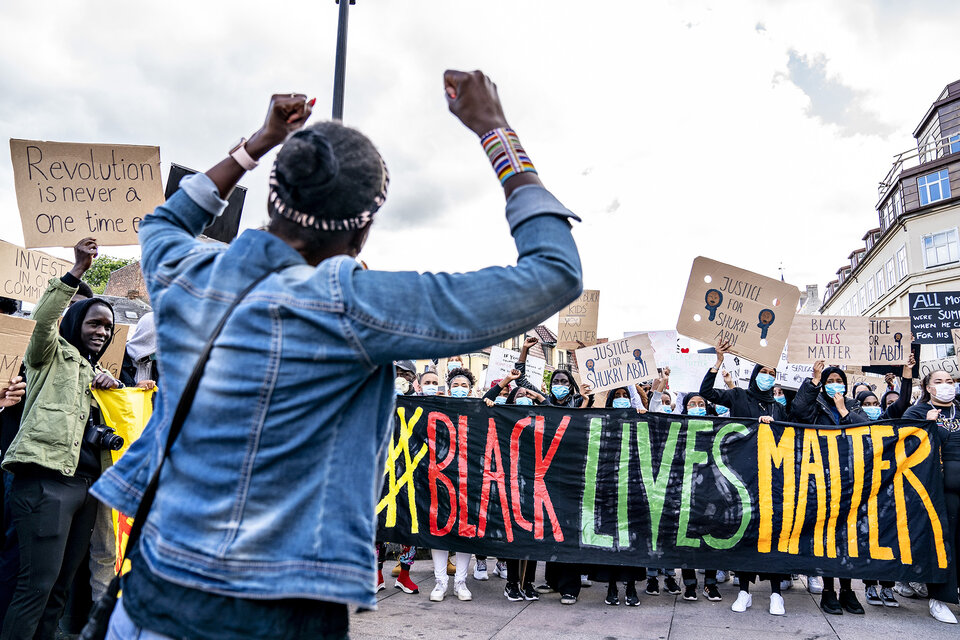
America’s history is that of racial segregation: slavery, civil war, Jim Crow laws and subtle, but systemic discrimination since Lyndon Johnson’s antiracist legislation in the 1960s. De jure or de facto, white supremacy has always been present. From this point of view, Donald Trump’s indifferent response to the killing of George Floyd connects with a strong root of American history; the Republican leader is not the cause, but rather the consequence of discrimination.
What will be the impact of social protests against police abuse during Trump’s presidency? The polls indicate that most Americans are in favor of the demonstrations, and against the president’s response. With the November election approaching, the polls show Joe Biden with a double-digit lead over Trump. But this is not the only reason the Republican incumbent will be a one-term president.
National polls say little, or don’t say it all, in a country that chooses its president indirectly through the Electoral College and where voting is optional. The success of U.S. presidential campaigns tends to depend more on the ability to mobilize people than on persuading them. And Trump knows how to mobilize Republicans because he knows what he represents: an America which is protectionist, conservative and not very tolerant of racial diversity; a white and Protestant nation in a country becoming less and less white and Protestant with time.
Trump embodies the fears of a group that feels threatened and is shrinking as minorities advance. The Republican vote is growingly racialized. In 2016, Trump won against Hillary Clinton by approximately 60% to 40% among white voters. This is a recent phenomenon. In the 1992 presidential election, George H. Bush prevailed over Bill Clinton in this demographic group by only 2%. The difference grows even deeper among white voters without a university degree. In that subgroup, the current president beat Hillary Clinton by 70% to 30% four years ago. Being left out by globalization and nostalgic for an America of the past, uneducated white people were the key element that enabled Trump to break the “blue wall” of the industrial Midwest states. Now that racial tension has risen again, he will resort to reaching out to this group in order to be reelected.
If the Republican Party and Trump represent a cohesive ideological movement, then the Democratic Party is an alliance of heterogeneous social groups with a less determined plan. Though it’s true that in recent years, due to ideological polarization, Democrats became consistently more progressive. But, as seen in the primary elections from 2016 and 2020, their electoral base is still divided between the moderate and left wings of the party.
So far, Biden’s answers to the street protests were quite erratic. He got to the point of recommending police officers “shoot them in the leg instead of the heart” when confronting unarmed demonstrators. That doesn’t seem to be the best message to calm people facing injustice. That lack of empathy toward the African American community raises a few eyebrows. Biden’s success against Bernie Sanders in the primaries is explained by how he performed in the Southern states, empowered by the Black vote. If it weren’t for African Americans, Biden would be a retired politician today. And his possibility of reaching the White House is in the hands of this demographic group. Maybe the main reason for Hillary Clinton’s defeat in 2016 was that she did not maintain the participation of Black voters at the same level as Barack Obama did.
At this point, there is sort of a paradox. In their own way, both presidential candidates offer a regressive kind of utopia. Trump represents the promise of returning to a conservative white America. But Biden also represents a throwback to Obama’s political order, to a pre-Trump era, a cosmopolitan country, diverse and open to the world. It remains unknown which idea will prevail in November.
As Steven Levitsky and Daniel Ziblatt point out, the integration of African Americans in the 1960s is the original source of political polarization in the United States. Fifty years ago, both of the major political parties were mainly white and religious. Racial exclusion was not an important matter in politics, and it definitely was not part of a cross-party consensus. It took decades of progress in civil rights, an influx of new immigration, and cultural change to radically transform the picture. Today, Republicans and Democrats express two completely opposite views of the country. With racial matters in sight, Trump has no interest in unity, and he intends to drill down on this divisiveness to remain in the White House for four more years. It is a strategy that poses some risks, not only for civil society, but also for American democracy.

Leave a Reply
You must be logged in to post a comment.